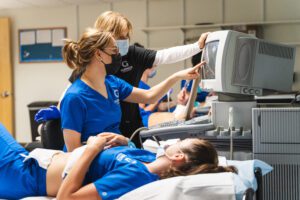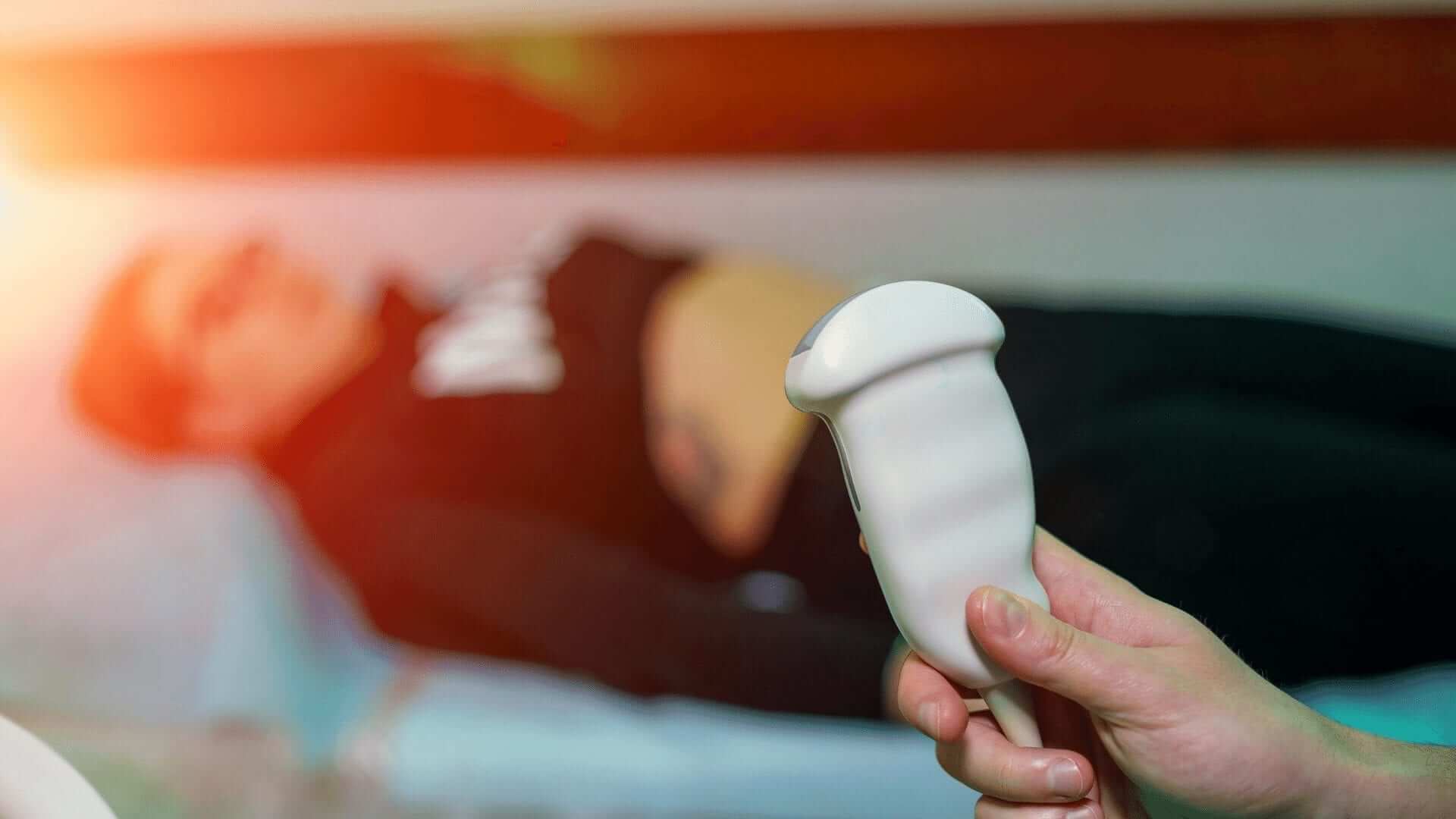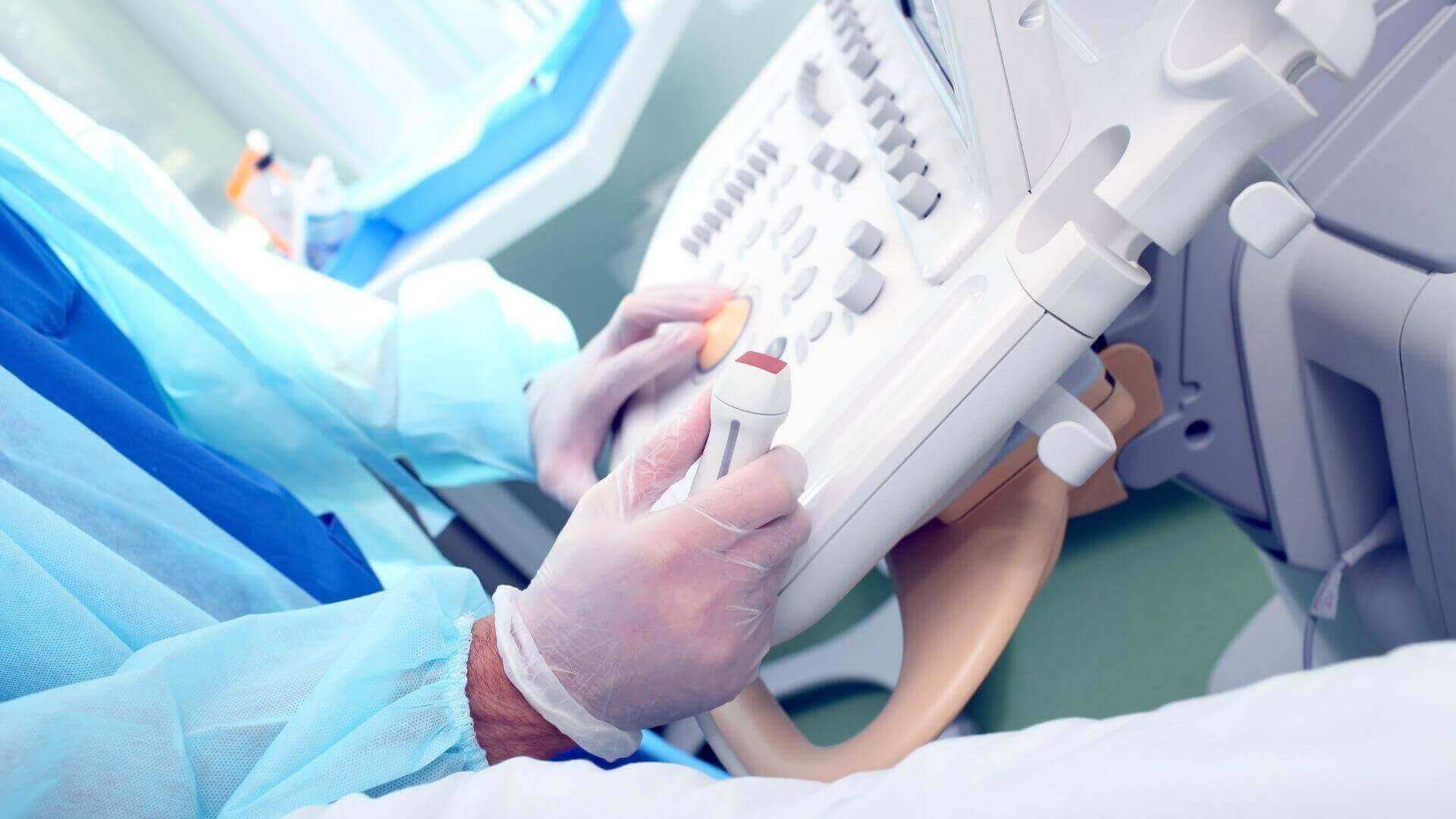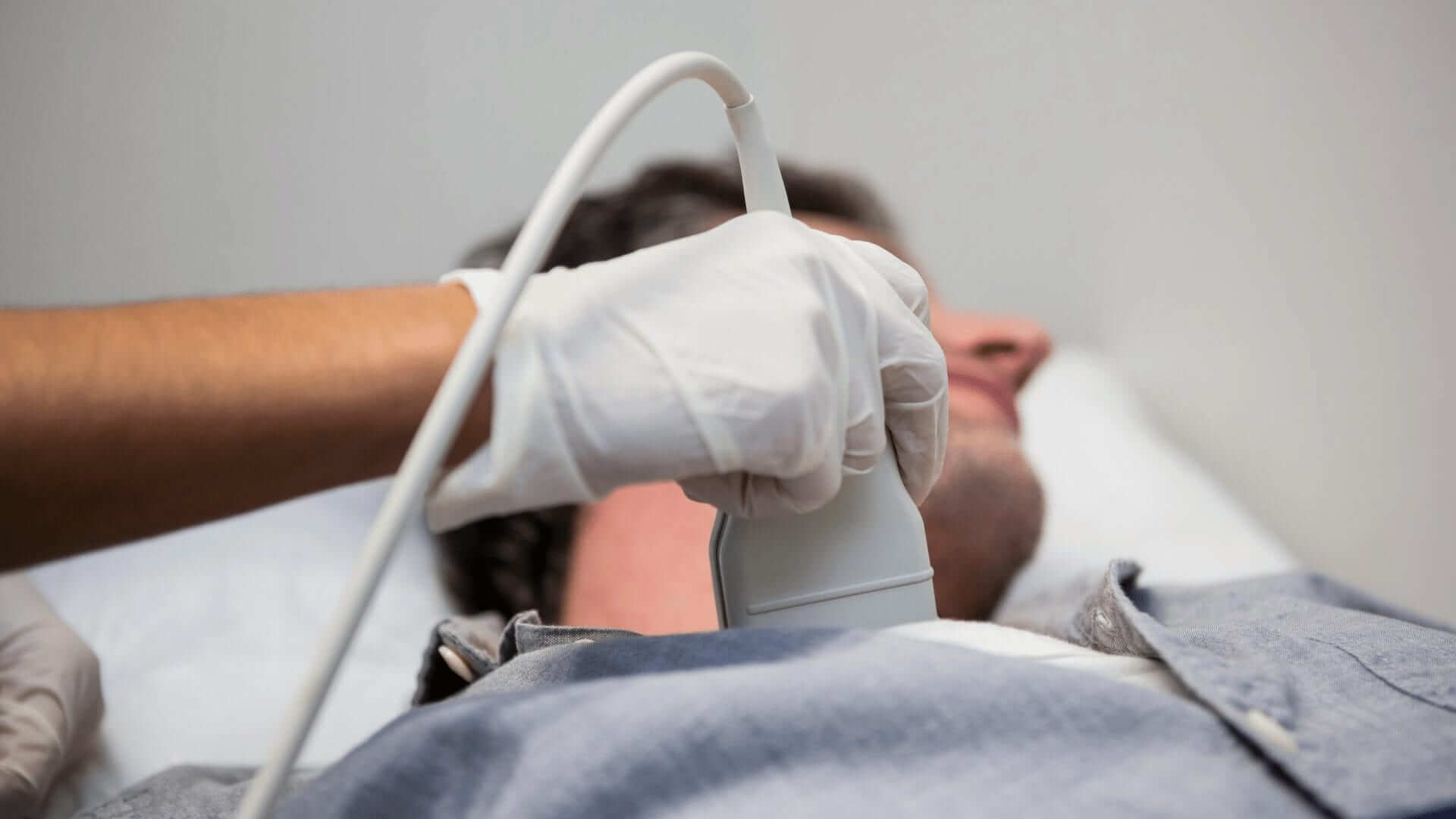What is Diagnostic Ultrasound School? What’s a Technologist?
Date: September 13, 2023
Unquestionably, modern medicine has advanced many wonders. One such marvel is the diagnostic ultrasound. An ultrasound is a non-invasive diagnostic technique used to image inside the human body.1 What’s more, this procedure produces sound waves to form pictures of organs, tissues, and other structures.
One modern healthcare marvel is the ultrasound
Moreover, ultrasounds allow your healthcare provider to access and view bodily areas without surgery, contrast, biopsy, radiation, or other intrusive means. However, unlike some other imaging modalities, ultrasound does not expose patients to radiation. Frequently, it is the less invasive method for obtaining diagnostic information.
Diagnostic and Therapeutic
In brief, medical ultrasound falls into two distinct categories: diagnostic and therapeutic.
- Diagnostic Ultrasound. On the whole, this ultrasound type uses probes, called transducers, to produce sound waves. These have frequencies above the threshold of human hearing (more than 20KHz). Consequently, most transducers in current use operate at much higher frequencies (in the megahertz (MHz) range).2
- Therapeutic Ultrasound. Accordingly, this ultrasound type, sometimes called ultrasound physical therapy, uses sound waves above the range of human hearing. However, this type of ultrasound does not produce images. Primarily, its purpose is to interact with tissues in the body to induce a reaction such as to modify or destroy.2 Some examples may include resolving kidney stones and healing bone fractures.
Notably, one everyday use of ultrasound monitors is to track fetal growth and development throughout pregnancy. Hence, most people are familiar with ultrasound because of its use during pregnancy. However, did you know this imaging is also suitable for viewing heart structures? Additionally, it’s used for viewing blood vessels and superficial structures like the thyroid gland, the neonatal brain, breasts, abdominal organs, skin, and muscles.2
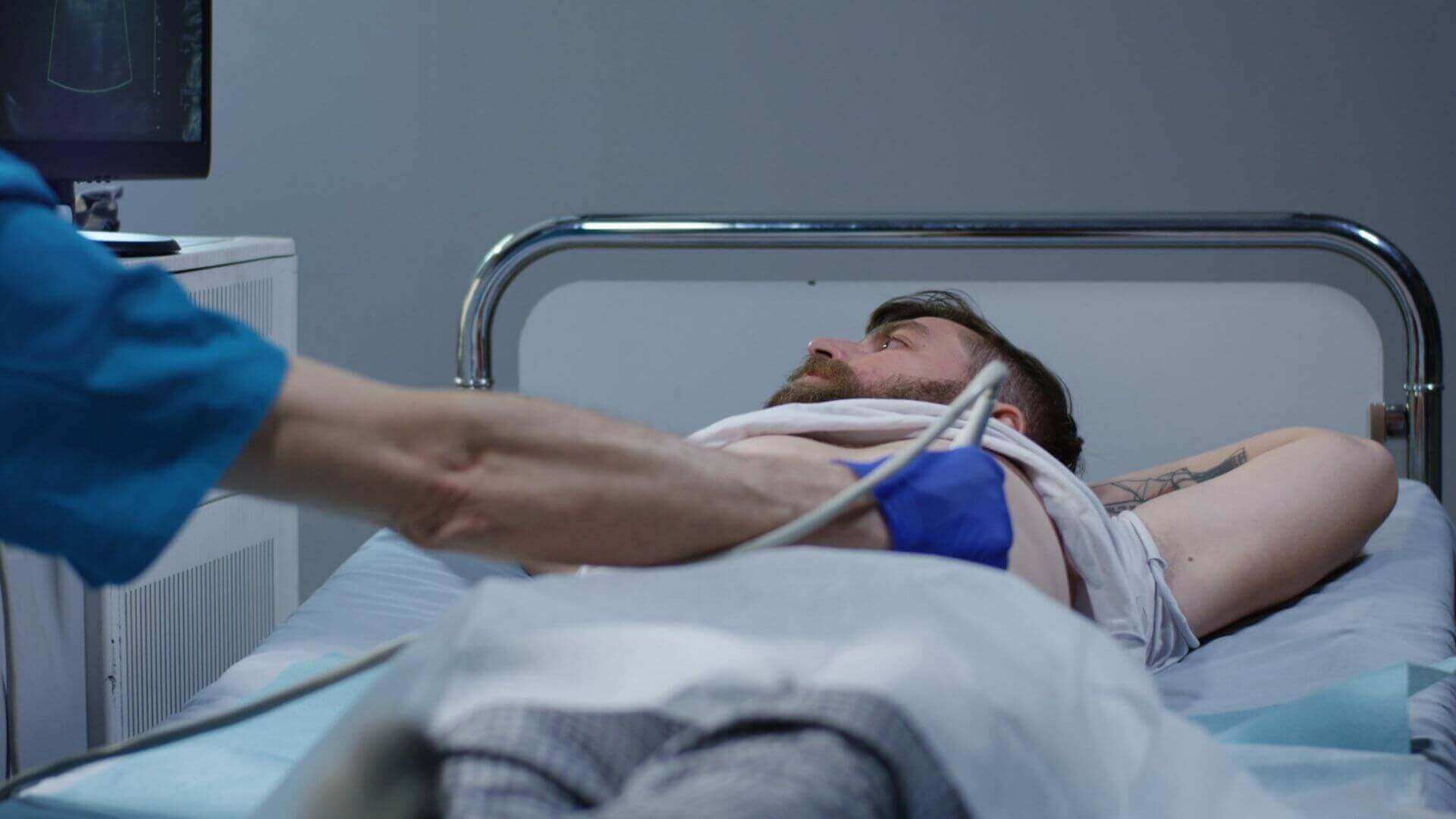
All in all, ultrasounds are conducted by a highly skilled Sonographer. To do so, he or she uses a small, hand-held device called a transducer against the studied area. Then they direct it as needed to capture the images. Subsequently, the transducer emits sound waves into your body, collecting those that bounce back. Finally, it sends them to a computer, which creates the images.3
What is an Ultrasound Technologist?
All in all, ultrasounds are successfully produced under the trained direction of qualified medical personnel. Unquestionably, working within medical ultrasonography requires knowledge, skill, and, most often, formal education. Whereas this healthcare professional is interchangeably referred to as an Ultrasound Technologist. Simultaneously, they may be called Medical Sonographers, Ultrasonographers, or Registered Diagnostic Medical Sonographers (R.D.M.S.).4
By and large, an Ultrasound Technologist is proficient in using specialized equipment. While working under the supervision of physicians, he or she performs sonographic procedures directly on patients. Besides this, the professional might also review and organize pertinent patient data to help problem-solve diagnostic results and provide optimum diagnostic services. Often, they assist physicians during invasive ultrasound-guided procedures.
A sonography vocation is a hybrid of health and technology
But of course, there’s always the paperwork. In any case, an Ultrasound Technologist manages medical records and performs routine maintenance. Effectively, these ensure optimal equipment functionality. Additionally, he or she oversees procurement.
Supporting Healthcare Role
Without a doubt, a supporting healthcare role, a sonography vocation is a hybrid of health and technology. On the whole, a Sonographer serves under a physician while working directly with patients. While most ultrasound professionals work in hospitals and imaging centers, others enjoy careers in physicians’ offices, clinics, and medical laboratories.
Finally, said professional must strive to administer compassionate patient care while serving within recognized ethical and legal standards and their scope of practice.
Education and Training
Concurrently, those who desire to enter the sonography field can attend an ultrasound-specific program through community colleges, allied health schools, and some universities. Moreover, these programs are necessary to prepare students for entry-level positions. Typically, persons wanting to be an Ultrasound Technologist may earn a diploma or an associate degree in ultrasound technology through an accredited diagnostic imaging program.
Whereby ultrasound training is offered at various academic levels. Such studies provide first-hand laboratory experiences and clinical training to cement training while ensuring confidence to perform work directly on patients.
Ways to Become an Ultrasound Technologist
Generally, the first rung to becoming an Ultrasound Technologist is to complete an official sonography course load. In brief, this should meet specific educational requirements within your educational goals. Ultrasound programs and their academic trajectories vary from 18-month certificates to two-year associate and four-year bachelor-level diplomas.5 You should expect your career training program to include didactic classroom instruction paired with clinical or externship training.
Likely, your school will provide you with an externship site(s). However, some students already working in the healthcare field in other roles may opt to do their training at their employment site. These experiences provide students with opportunities within various medical settings, including hospitals, physician’s offices, and imaging laboratories.
Being part of such opportunities gives students exposure to the work environment, schedule, and workflow. It may also help them gauge whether the field in general and the role in particular may be right for them.
UT Routes
One must complete a program and then obtain licensing. Moroever, each educational level has its strengths. Below are some specific routes within sonography. Specialty certificates are also available to practicing sonographers.
Certificate |
Associate Degree |
Bachelor’s Degree |
||
|
Certificate program coursework, 18 to 24 months to complete, is designed for individuals with prior experience and education in allied healthcare professions.5 Often, certification is available to students who have already obtained an Associate of Science (A.S.) or a Bachelor of Science (B.S.) Degree in a related field. Advanced PlacementFor an advanced placement program, these professionals are often looking to transition into diagnostic medical sonography from a similarly situated profession, such as another imaging modality.6 Graduates of an accredited program such as the Commission on Accreditation of Allied Health Education Programs (CAAHEP) can sit for certification exams with the American Registry for Diagnostic Medical Sonography® (ARDMS).7® Specialty CertificatesSpecialty certificates are also available to practicing Sonographers wishing to expand their education and opportunities. |
A common path for obtaining ultrasound certification involves earning an Associate of Science Degree in Diagnostic Medical Sonography. Taking less time to achieve than a four-year course, this route can provide a gateway into the industry and a foundation for a four-year degree ‘bridge’ later. Gurnick Academy of Medical Arts’ Ultrasound Technology Program, with a length of 24 months. CourseworkOur coursework blends didactic and clinical training while exposing students to the rigors of the field. Moreover, coursework covers general sonography, physiology, anatomy, physics, instrumentation, ultrasound equipment, medical ethics, medical terminology, and patient care.4 SpecialtiesAdditionally, students are introduced to differing specialties, including radiology, surgery, echocardiography, vascular technology, obstetrics, and gynecology.
|
Others enter the ultrasound profession by obtaining a four-year Bachelor of Science in Medical Sonography Degree. Many universities offer these courses. Said courses are generally open to those who have completed general university requirements (GURs) in science, math, and English prerequisites.7 CourseworkBy and large, coursework delves into biology, physics, lab equipment, medical terminology, and patient interaction, specially tailored to ultrasound. Moreover, bachelor-level ultrasound programs offer students opportunities to specialize in particular medical diagnostic areas. These include vascular, echocardiography, or general (abdominal, obstetrics, and gynecology) and their corresponding coursework. ExperienceUsually, an ultrasound bachelor’s degree program includes clinical and externship experiences. However, sometimes, for an advanced placement program, these are not required due to previous work experience.7 |
||
Certification
After completing an accredited ultrasound program, students should seek licensure. To accomplish this, one must receive certification and registration by the *A.R.R.T.© Certification provides generalized credentials, confirming one has sufficient sonography knowledge and can provide ultrasound services safely.
Ultrasound professionals wishing to work in specialty areas should first obtain certification by sitting for the Sonography Principles and Instrumentation Exam (S.P.I.).5 They should then complete the two-step process (including their specified modality) through the A.R.D.M.S.©
Accreditation
Gurnick Academy of Medical Arts recently received programmatic accreditation through the Commission on Accreditation of Allied Health Education Programs (C.A.A.H.E.P.)7 via J.R.C.-D.M.S. for the ultrasound technology program offered at the San Jose Campus. C.A.A.H.E.P. reviews diagnostic medical sonography programs to ensure they meet nationally recognized standards of the profession. The Academy is also institutionally accredited by A.B.H.E.S.
Continuing Education
Life as an Ultrasound Technologist is an ongoing learning journey. Because of this, field professionals must earn continuing education credits (CECs) to maintain certification.5 On the whole, those in the field should be open and willing to learn. In conclusion, their focus should be on staying on top of the latest trends, learning new best practices, and keeping abreast of novel applications within sonography.
Pursue a Career Today
Consequently, if you like working with technology, have a passion for healthcare, and enjoy serving others, the dynamic and exciting field of sonography may be the one to set your sights on! One way to determine if this path is for you is to take our free, 3-minute career training readiness quiz today.~
*A.R.R.T.,® American Registry of Radiologic Technologists,® R.T.(MR)(A.R.R.T.),® and R.T.(T)(A.R.R.T.)® are registered trademarks owned by The American Registry of Radiologic Technologists.® Gurnick Academy is not licensed by, endorsed by, or affiliated with The American Registry of Radiologic Technologists.®
Written by Cindy R. Chamberlin.
Citations
1 “Ultrasound: MedlinePlus Medical Test.” Medlineplus.gov, National Institutes of Health. (Accessed September 2, 2023.)
2^a, b, c “Ultrasound.” Www.nibib.nih.gov, National Institutes of Health. (Accessed September 1, 2023.)
3 “Overview of Therapeutic Ultrasound Applications and Safety Considerations.” Ncbi.nlm.nih.gov, National Library of Medicine. (Accessed September 12, 2023.)
4 Mayo Staff. “Ultrasound–Mayo Clinic.” Www.mayoclinic.org, Mayo Clinic. April 30, 2022. (Accessed September 7, 2023.)
5^a, b, c Locsin, Aurelio. n.d. “What Is the Difference between an Ultrasound Technician and a Medical Sonographer?” Hearst. (Accessed June 2, 2021.)
6^ a, b, c “Sonography Principles and Instrumentation (SPI).” American Registry for Diagnostic Medical Sonography, Inc. 2021. (Accessed June 28, 2021.)
7 “Is Sonography School REALLY That Difficult? Ultrasound Technician.”Ultrasound Technician. Ultrasound Technician Center. March 4, 2015. (Accessed June 2, 2021.)
8^a, b, c, d Esmet. 2019. “CAAHEP–Home.” Caahep.org. Commission on Accreditation of Allied Health Education Programs. 2019. (Accessed June 28, 2021.)


